Occupational Safety Training in the Livestock Industry
99,000 ₫
Note: The above price is calculated for one person, the price may fluctuate depending on the number of trainees participating in the course and the market movement. For more accurate price support, please refer to the price list or contact our consulting staff directly.
The Occupational Safety Training course in animal husbandry is a program that provides group 3 occupational safety knowledge. The course will raise awareness of how to prevent occupational accidents during work for trainees. Accordingly, the occupational safety training content is closely based on Article 18 Decree 44/2016/ND-CP.
Table of Contents
Toggle1. Overview of the livestock industry
a. What is the livestock industry?
- The livestock industry is the economic sector of manufacturing domesticated animals to provide meat, milk, eggs, wool, leather, and other animal products. The livestock industry includes many types of domesticated animals such as livestock (cows, pigs, goats, sheep), poultry (chickens, ducks, geese, birds), aquaculture (shrimp, fish, seafood), and aquatic animals (crocodiles, turtles, frogs). The livestock industry plays an important role in the national economy, contributing significantly to agricultural manufacturing and providing food sources for humans.
- The livestock industry in Vietnam is developing positively in recent years, contributing significantly to the national economy. Specifically, Vietnam’s aquaculture output is steadily increasing and ranks fourth among the leading aquaculture manufacturing countries in the world. Livestock, poultry, and aquaculture output in Vietnam are also rapidly growing, meeting domestic consumption needs and exports. However, Vietnam’s livestock industry still faces many challenges such as disease outbreaks, environmental pollution, product quality issues, and price competition from other manufacturing countries.
- To develop the livestock industry sustainably, it is necessary to apply modern technical measures, improve product quality, ensure food safety and environmental hygiene, while enhancing competitiveness and promoting product consumption.

b. Types of animals raised in Vietnam
In Vietnam, the common types of animals raised include:
- Pigs: The largest domesticated animal in Vietnam, also known as heo or lon, accounting for nearly 70% of total livestock output.
- Chickens: The most common poultry raised for meat and eggs. Currently, Vietnam has developed many high-quality breeds such as Ga Ta, Ga Ac, Ga Lara, Ga Hmong, Ga Nghe Tinh…
- Cows: Raised for meat and milk, mainly concentrated in the plains and central regions of Vietnam.
- Sheep: Raised in mountainous and hilly areas, especially in the northern region.
- Ducks: Another type of poultry commonly raised for meat and eggs. In Vietnam, ducks are also raised widely.
In addition, there are some other animals such as goats, horses, camels… raised in Vietnam, but their output is insignificant compared to the above animals.

c. Typical enterprises in the livestock industry
Typical enterprises in the livestock industry include:
- C.P Vietnam Corporation – a multinational company operating in livestock and food processing. The company provides products from chicken, pork, beef, and other processed food products.
- Dabaco Vietnam Co., Ltd. – one of the leading enterprises in pig farming in Vietnam. The company provides pork products and other pig-derived products.
- C.P. Vietnam Co., Ltd. – a subsidiary of C.P Vietnam Group. The company operates in manufacturing animal feed and livestock farming. It provides pork, chicken, and other processed food products.
- GreenFeed Vietnam Co., Ltd. – one of the pioneering enterprises in manufacturing animal feed and livestock farming in Vietnam. The company provides livestock feed, fish feed, poultry feed, and other processed food products.
- Japfa Comfeed Vietnam Co., Ltd. – one of the leading enterprises in manufacturing animal feed and livestock farming in Vietnam. The company provides pork, chicken, beef, and other processed food products.
- Hoang Anh Gia Lai (HAGL) Joint Stock Company – one of the major companies in agriculture and livestock farming in Vietnam. HAGL’s livestock sector includes poultry farming, pig farming, cow farming, and aquaculture.
d. Specific jobs in the livestock industry
Specific jobs in the livestock industry include:
- Aquaculture workers: Responsible for raising fish, shrimp, prawns, crabs, snails, oysters, and other aquatic products.
- Animal caretakers: Usually work on farms or livestock facilities, responsible for feeding, watering, cleaning barns, and other related tasks.
- Procurement staff: Work in food processing or livestock trading enterprises. Their job is to purchase animal products from farms or livestock facilities.
- Sanitation staff: Usually work in livestock farms or food processing factories. Their job is to keep production and processing areas clean and hygienic.
- Security staff: Usually work in farms, livestock areas, or food processing enterprises to ensure security and safety in production and processing areas.
e. Products of the livestock industry
The livestock industry has many different products depending on the type of animal raised. Below are some common products:
- Poultry meat: Includes meat from chickens, ducks, geese, quails, etc.
- Pork: Includes meat from pigs (heo, lon).
- Beef: Includes meat from cows and buffaloes.
- Eggs: Includes eggs from chickens, ducks, geese, etc.
- Milk and dairy products: Includes cow’s milk, goat’s milk, sheep’s milk, butter, cheese, yogurt, etc.
- Aquatic products: Includes fish, shrimp, crabs, clams, oysters, mussels, etc.
- Fur, leather, and leather products: Includes feathers and hides from poultry, pigs, cows, buffaloes, etc.
- Fertilizer: Produced from animal and plant waste, used for crop fertilizer.
- Veterinary medicine: Includes products used for disease prevention and treatment for livestock.
In addition, the livestock industry also produces products such as bone meal, animal fat, collagen from animal skin, etc.
2. Overview of occupational safety training in the livestock industry
a. What is occupational safety training in the livestock industry?
- Occupational safety training in the livestock industry consists of lessons providing awareness of how to prevent workplace accidents for employees. Accordingly, those working directly in the livestock industry belong to group 3.
- The occupational safety training course helps employees identify and avoid hazards, minimizing risks of workplace accidents while working.
REGISTER FOR OCCUPATIONAL SAFETY TRAINING SERVICE
b. Training duration
First-time training duration
- The total training duration is at least 24 hours, including examination time.
- 8 hours of theoretical lessons on occupational safety and hygiene policies and laws
- 8 hours of theoretical lessons on basic knowledge of occupational safety and hygiene
- 4 hours of theoretical lessons on specialized training content
- 2 hours of practical training on specialized training content
- 2 hours of theoretical examination to conclude the training course
The occupational safety training center will schedule training sessions depending on workers’ availability. Typically, there will be 6 sessions over 3 days if the manufacturing enterprise can arrange continuous training.
Periodic training duration
- Before the occupational safety card expires, employees who wish to renew it must attend periodic occupational safety training, with training duration of at least 50% of the first-time training duration.
Explanation: the total periodic occupational safety training duration is at least 12 hours, including examination time. After completing the periodic training and passing the test, employees will be reissued or renewed with the occupational safety card.
c. Training content
| No. | TRAINING CONTENT | TRAINING DURATION (HOURS) | |||
| Total | Including | ||||
| Theory | Practice | Examination | |||
| I | System of occupational safety and hygiene policies and laws | 8 | 8 | 0 | 0 |
| 1 | Overview of the legal document system on occupational safety and hygiene. | 6 | 6 | ||
| 2 | System of occupational safety and hygiene standards and technical regulations. | 1 | 1 | ||
| 3 | Specific regulations of state management agencies on occupational safety and hygiene when building new, expanding, or renovating facilities for manufacturing, using, storing, and testing machinery, equipment, materials, and substances with strict occupational safety and hygiene requirements. | 1 | 1 | ||
| II | Basic knowledge of occupational safety and hygiene | 8 | 8 | 0 | 0 |
| 1 | Basic knowledge of hazardous and harmful factors in the workplace. | 4 | 4 | ||
| 2 | Methods to improve working conditions. | 1 | 1 | ||
| 3 | Safety culture in manufacturing and business. | 1 | 1 | ||
| 4 | Rights and obligations of employers and employees; policies and regimes on occupational safety and hygiene for employees; functions and tasks of the occupational safety and hygiene network. | 1 | 1 | ||
| 5 | Occupational safety and hygiene regulations, safety signs, instructions, and the use of safety equipment and personal protective equipment; first aid skills for workplace accidents and occupational disease prevention. | 1 | 1 | ||
| III | Specialized training content | 6 | 4 | 2 | 0 |
| Comprehensive knowledge of machinery, equipment, hazardous substances; risk analysis, assessment, and management in occupational safety and hygiene; safe working procedures with machinery, equipment, and substances with strict occupational safety and hygiene requirements. | 6 | 4 | 2 | ||
| IV | Final examination of occupational safety training | 2 | 2 | 0 | 0 |
| Total | 24 | 22 | 2 | ||
See more training content of the 6 groups
d. Occupational safety card
After completing the occupational safety training course and passing the examination, employees will be issued an occupational safety card (also commonly called occupational safety certificate for group 3).
The group 3 card clearly states information such as full name, date of birth, job, and specific working environment. It also includes training duration, a red seal, and a signature confirming course completion.
According to the card issuance regulations specified in Clause 2 of Article 24 of Decree 44/2016/ND-CP, there are two cases:
- If the employer and employee have a labor contract, the employer must sign, stamp, and affix a seal on the card for group 3 employees after they complete training from an occupational safety training unit and pass the examination.
- If the worker is freelance or seasonal without a labor contract, the training unit must sign, stamp, and affix a seal on the card after the worker completes training and passes the examination.

3. Identifying hazards in the livestock industry
There are several common hazards in the livestock industry that need to be identified and managed to ensure safety and product quality:
- Hazards related to human health: This is the most fundamental hazard of the livestock industry. Diseases that can be transmitted from animals to humans such as swine cholera, E. Coli pathogens, or the recently identified coronavirus. Therefore, occupational safety and environmental hygiene measures in the livestock industry are extremely important.
- Hazards to animal health: The livestock industry also faces many hazards related to animal health, including infectious diseases, malnutrition, environmental pollution, and even acts of animal cruelty.
- Hazards to product quality: Causes such as contamination, improper use of pesticides, or not meeting breeding standards can lead to livestock products not meeting quality standards.
- Economic hazards: Objective factors such as feed prices, meat prices, diseases, and natural disasters can affect livestock output and quality, reducing the economic efficiency of the livestock industry.
- When operating livestock equipment such as water pumps, elevators, cranes, there is a risk of occupational accidents such as collisions, falls from height, or machine explosions.
- When raising animals, the hazards from animals to humans are very high. Livestock are often large in size, strong, and may be uncontrollable. Unexpected animal behaviors can cause injuries such as butting, goring, struggling, trampling, and biting.
4. Safety measures for the livestock industry
Safety measures for the livestock industry include:
- Ensuring animal housing areas are clean, ventilated, ensuring food safety and hygiene, preventing the spread of disease, and avoiding environmental pollution.
- Implementing epidemic prevention measures such as vaccination, using preventive medicines, and isolating animals when there are signs of disease.
- Ensuring that workers use full personal protective equipment such as respirators, gloves, safety glasses, etc.
- Occupational safety training provides workers with knowledge of occupational safety and epidemic prevention measures, how to use protective equipment properly, in order to minimize occupational accidents and protect workers’ health.
- Ensuring the safe transport of animals and livestock products by controlling vehicle load capacity, ensuring safety for drivers and road users.
- Using feed and veterinary medicines properly, ensuring safety for animals and consumers.
- Ensuring that waste and manure treatment processes are carried out properly to avoid environmental pollution and impacts on human health.
- Regularly organizing occupational environment monitoring in factories and enterprises, collecting and analyzing harmful factors to workers, thereby adjusting and reducing hazards to prevent occupational diseases for them.

5. Types of accidents in the livestock industry
In the livestock industry, there are several common types of accidents such as:
- Occupational accidents that occur when workers work with equipment, machinery, or tools in livestock farming. These accidents can cause injuries, wounds, poisoning, or even death.
- When transporting animals or products from livestock farms to other locations, traffic accidents may occur. These accidents can cause injuries, harm to animals, and even pose a danger to the lives of drivers.
- During animal care and feeding, unfortunate situations may occur, such as being bitten, gored, or chased by animals, posing a danger to workers’ lives and health.
- These accidents often occur due to animal loss, death, or disease in farms. Waste treatment and disposal of dead animals are also potential risks, which can cause environmental pollution and affect human health.
- Bad weather can cause accidents in the livestock industry, such as lightning strikes, tornadoes, floods, or forest fires.
6. Benefits of occupational safety training in the livestock industry
An Toan Nam Viet provides businesses with great benefits after completing occupational safety training courses in accordance with Decree 44/2016/NĐ–CP on occupational safety and hygiene for companies, factories, and enterprises.
- Workers can identify potential occupational accident risks and take preventive measures to avoid accidents.
- Businesses establish risk prevention measures in production, operation, and maintenance processes.
- Minimize costs when there is a risk of occupational safety loss.
- Uninterrupted production processes help increase labor productivity and product quality.
- Complying with labor safety laws to avoid legal risks.
- Creating prestige and professionalism in all aspects, thereby enhancing the brand for businesses.
The training courses of An Toan Nam Viet are the solution to prevent and resist external factors affecting individuals, so they can avoid dangers that may lead to injury or even death.
REGISTER FOR OCCUPATIONAL SAFETY TRAINING SERVICE
7. Customer feedback after completing the training course
An Toan Nam Viet has many years of experience in the mission of accompanying many businesses in Vietnam in general and in the southern provinces in particular. That responsibility for An Toan Nam Viet is extremely valuable, which is why the occupational safety training of An Toan Nam Viet is increasingly professional. The driving force for An Toan Nam Viet to grow strong until now comes from the positive feedback and suggestions of businesses. Below are the feedbacks of our valued partners we have served.
Bac Nam E&C Construction Investment Joint Stock Company
“This is the first time using the service at An Toan Nam Viet and I was very surprised by the enthusiastic 24/7 support of the consulting staff. The class organization was very quick and convenient for our company, thank you very much for An Toan Nam Viet’s service!”
Hoa Dat Construction and Trading Joint Stock Company
“The service of An Toan Nam Viet has helped us a lot in simplifying occupational safety and completing safety documents for the working process. The consulting staff were enthusiastic and timely in answering our questions. 5 stars for An Toan Nam Viet.”
See more customer interviews after using the service of An Toan Nam Viet
8. Occupational safety training capacity of An Toan Nam Viet
An Toan Nam Viet is a reputable and quality occupational safety training center in Vietnam today. With occupational safety training sessions continuously held at manufacturing workshops, factories, or construction sites nationwide (63 provinces and cities in Vietnam).
REGISTER FOR OCCUPATIONAL SAFETY TRAINING SERVICE
License for occupational safety training
- An Toan Nam Viet has been inspected and certified by the Department of Occupational Safety of the Ministry of Labor – Invalids and Social Affairs and granted the certificate of eligibility for occupational safety and hygiene training activities. This further strengthens our occupational safety training capacity.

Materials and lectures
- Before occupational safety training materials are included in occupational safety training courses, they are reviewed and approved to ensure the lectures are always accurate in terms of knowledge and effective when applied.
- The teaching methods of the instructors are standardized according to the teaching standards of An Toan Nam Viet, which have been researched and summarized by occupational safety and hygiene training experts during teaching, in order to bring the highest learning efficiency for students.
Facilities
- Controlling the factors in classrooms that affect the training process will increase teaching efficiency and students’ knowledge absorption.
- Training facility support of ours always arranges spacious classrooms that meet standards in terms of area, lighting, training equipment, etc.
9. Nationwide reputable and quality occupational safety training center
At An Toan Nam Viet, we always put professional dedication to occupational safety training as our top priority. For us, imparting knowledge for workers to know how to protect themselves so they have safety skills on their livelihood journey is contributing to nation-building.
To ensure effective training, we carefully and meticulously prepare every detail, even the smallest. From preparing tools, teaching equipment to curriculum, materials, sound, and lighting.
Our occupational safety trainers are experts with many years of experience in the field. They even have research projects on identifying hazards in all industries and how to prevent them.
The lectures of the trainers are drawn from practice and delivered vividly and easily for workers to understand. These factors help workers feel comfortable during study time and absorb the knowledge we provide effectively. Of course, the knowledge imparted always closely follows Decree 44/2016/NĐ-CP.
From there, they grasp many preventive measures against hazards and how to protect themselves. At the same time, they apply it in the most appropriate way in their actual work.
Our safety training center is proud to provide reputable and professional occupational safety training services with the following advantages:
- Competitive training costs while ensuring training quality.
- Flexible training schedules suitable for the company’s manufacturing situation.
- Fast and legal occupational safety training certification procedures.
- Instructors are highly experienced professionals.
- Classrooms are controlled for factors that affect training, increasing teaching efficiency and knowledge absorption.
- Lectures are compiled to suit occupational safety at enterprises.
- An Toan Nam Viet works wholeheartedly and professionally to support customers accurately and quickly.

10. Refer to more occupational safety training materials in the livestock industry
- Set of occupational safety training materials
- Occupational safety training materials for the livestock industry
- Occupational safety training test
11. Occupational safety training activities in the livestock industry
1 review for Occupational Safety Training in the Livestock Industry
No comments yet

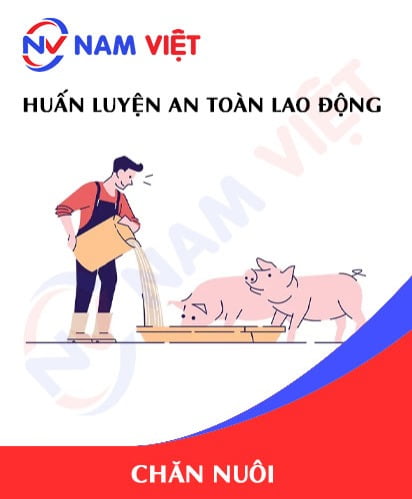
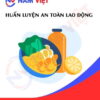
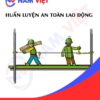



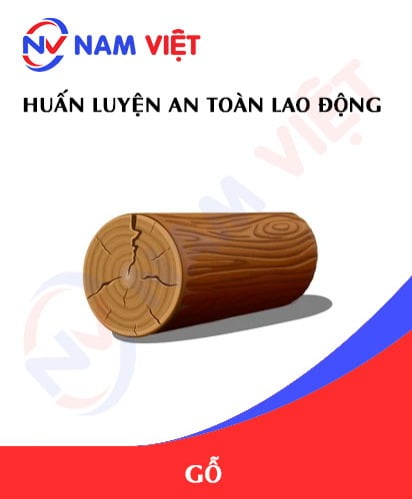
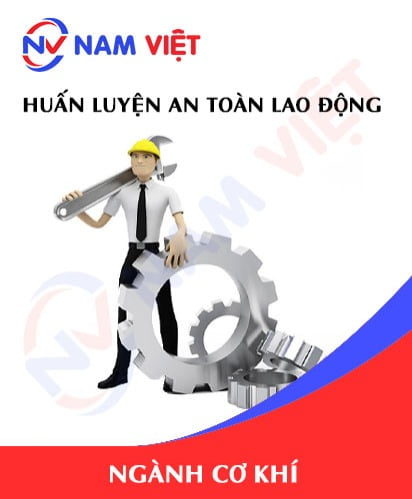
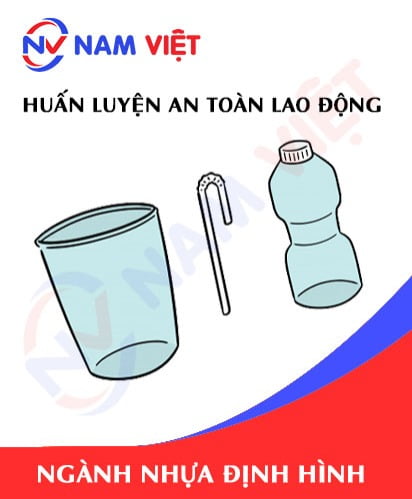
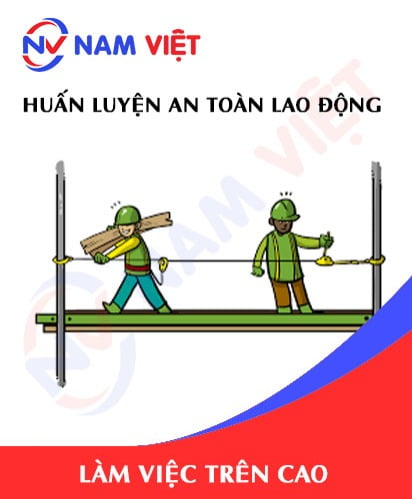
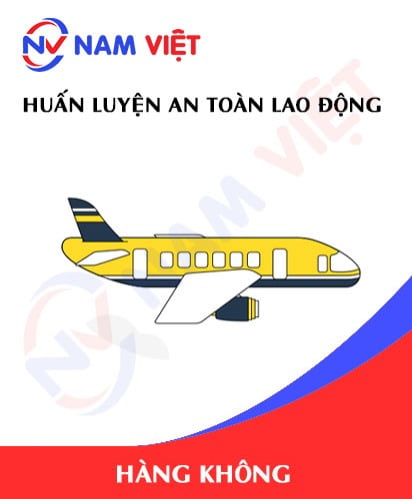
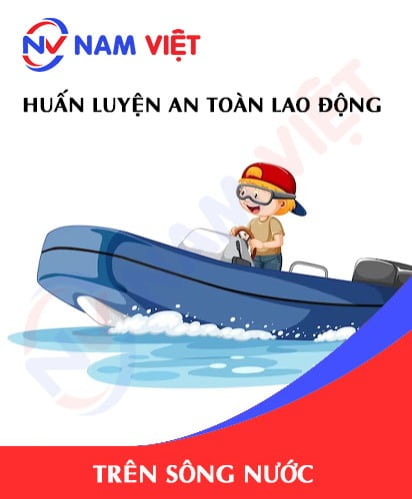
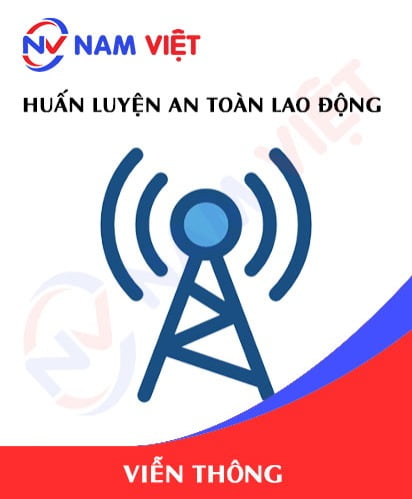
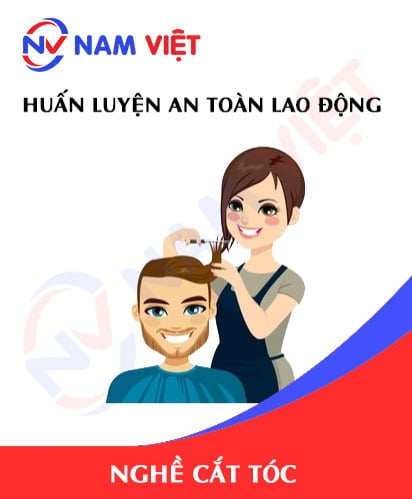
caotiensyhung.07081999
Dịch vụ tốt!